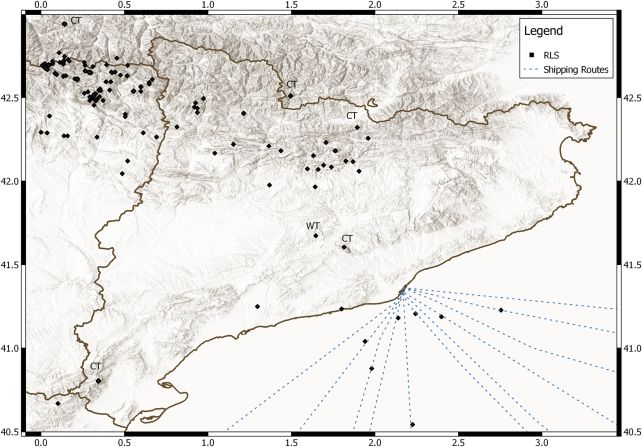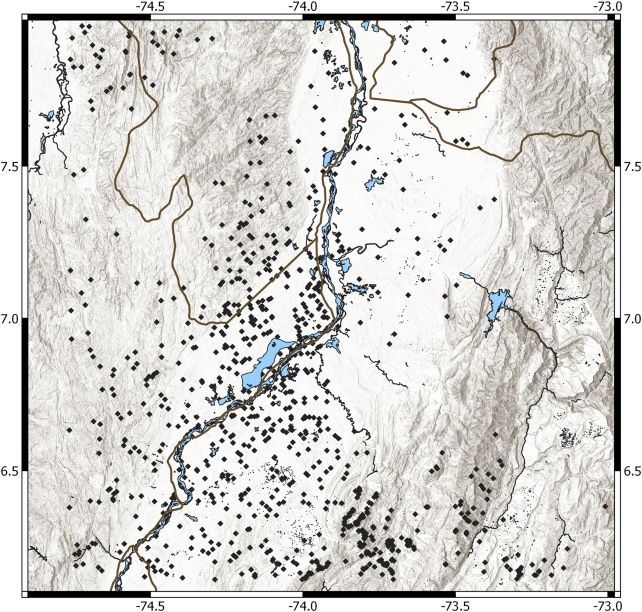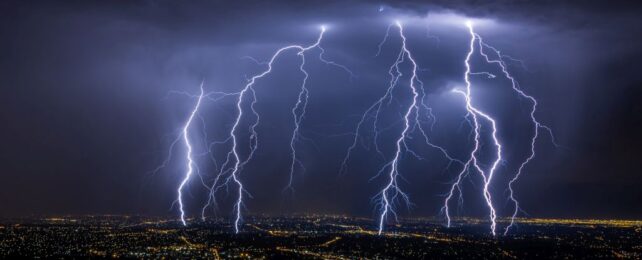We've known for some time that the old adage about the repeat performance of lightning is not, in fact, true. The powerful bolts of electricity from the sky can, and frequently do, make contact with Earth in the same place more than once.
It would be strange if it didn't, to be honest. Around the world, we record some 44 lightning strikes every second. One imagines that it'd run out of places to strike if it couldn't return to places lightning had already been.
Nevertheless, some places are more susceptible to repeated strikes than others. And now, a team of scientists led by electrical engineer Gloria Sola of the Technical University of Catalonia in Barcelona has worked out what some of those places are: really high ones, or steep slopes.
The researchers have called these sites recurrent lightning spots (RLS), and say that their discovery offers insights into how to protect ourselves and our structures from cloud-to-ground lightning.
"The expression 'lightning never strikes twice' is questioned in this paper because it shows that some spots are hit even more than twice: year after year," the researchers write in their paper.
"The two regions of study with markedly different lightning climatology but similar orography are Catalonia (North East of Spain, Europe) and Barrancabermeja (in North Central Colombia, South America). RLS in both regions are typically found to be related to tall structures, mountain peaks and steep terrain."
To identify RLS, the researchers tapped into datasets from the lightning detection network known as LINET. For Catalonia, they used a dataset that spanned 10 years, from 2011 to 2020; for Barrancabermeja, their dataset spanned 9 years, from 2012 to 2020.

For the Catalonia region, the dataset included 5 million cloud-to-ground lightning strikes in an area measuring 285 by 340 kilometers (177 by 211 miles). The 93- by 97-kilometer study area of Barrancabermeja, closer to the tropics where lightning is more common, was much more active, with nearly 70 million recorded cloud-to-ground strikes.
But in both regions, some spots were much more likely to be hit by lightning than others. The researchers divided up their two areas into grids, and counted the lightning strikes in each segment of the area.
In Catalonia, 13 percent of the lightning strikes hit tall buildings, and 72 percent hit high altitudes, mostly mountains in the Pyrenees, at elevations between 1,000 and 3,000 meters (3,280 and 9,842 feet) above sea level. Many of the observed strikes were found at pointed mountain peaks, the researchers found. They identified 148 RLS with a median altitude of 2,400 meters.
Barrancabermeja, on the other hand, sits at a low elevation. There, RLS had a median altitude of 175 meters, but were found to occur on steep terrain, where the ground slopes at severe angles, or hitting tall towers that stood out above lower buildings.

It's well established that tall objects like skyscrapers are more susceptible to lightning strikes (the Empire State Building is hit by an average of 25 strikes per year). The team's research is consistent with this data, but also shows that, even at lower altitudes, a tall, human-made structure is not the only spot attractive to lightning.
Although the research only applies to two areas, the findings suggest that steep regions might be more likely to be struck by lightning. This can aid future analyses of other regions, and might help future human construction efforts.
"All in all, the new concept of RLS could be of interest to activities affected by lightning, such as wind energy, communication towers, or transmission and distribution of electric power systems, as additional information that the ground flash density provides," the researchers write.
"RLS can be quickly adopted as part of risk assessment and preventive maintenance. Undoubtedly, the information about RLS will be attractive to insurance companies."
And now we know, if a lightning storm strikes, wet your head, and make for flat terrain.
The findings have been published in JGR Atmospheres.
